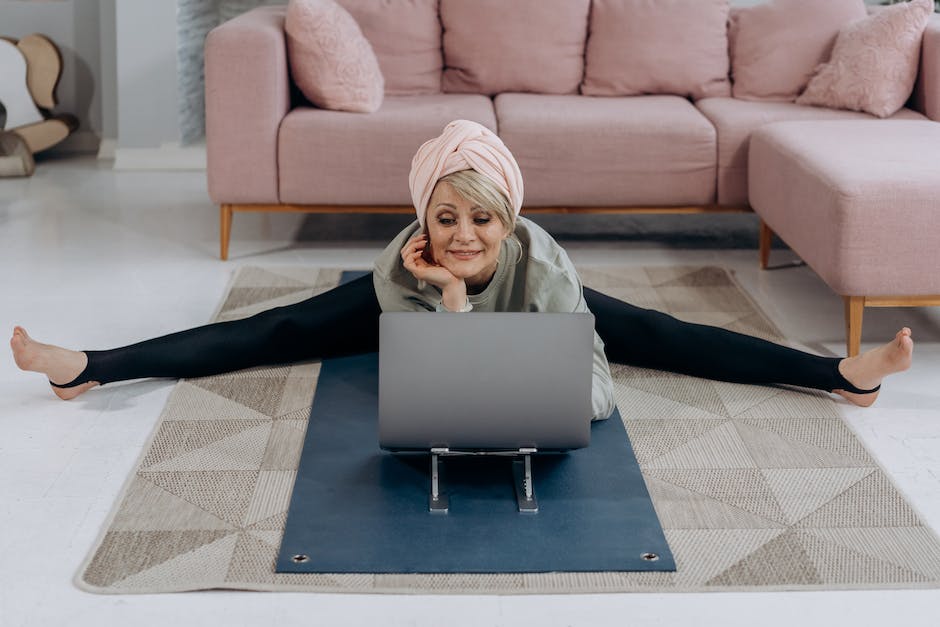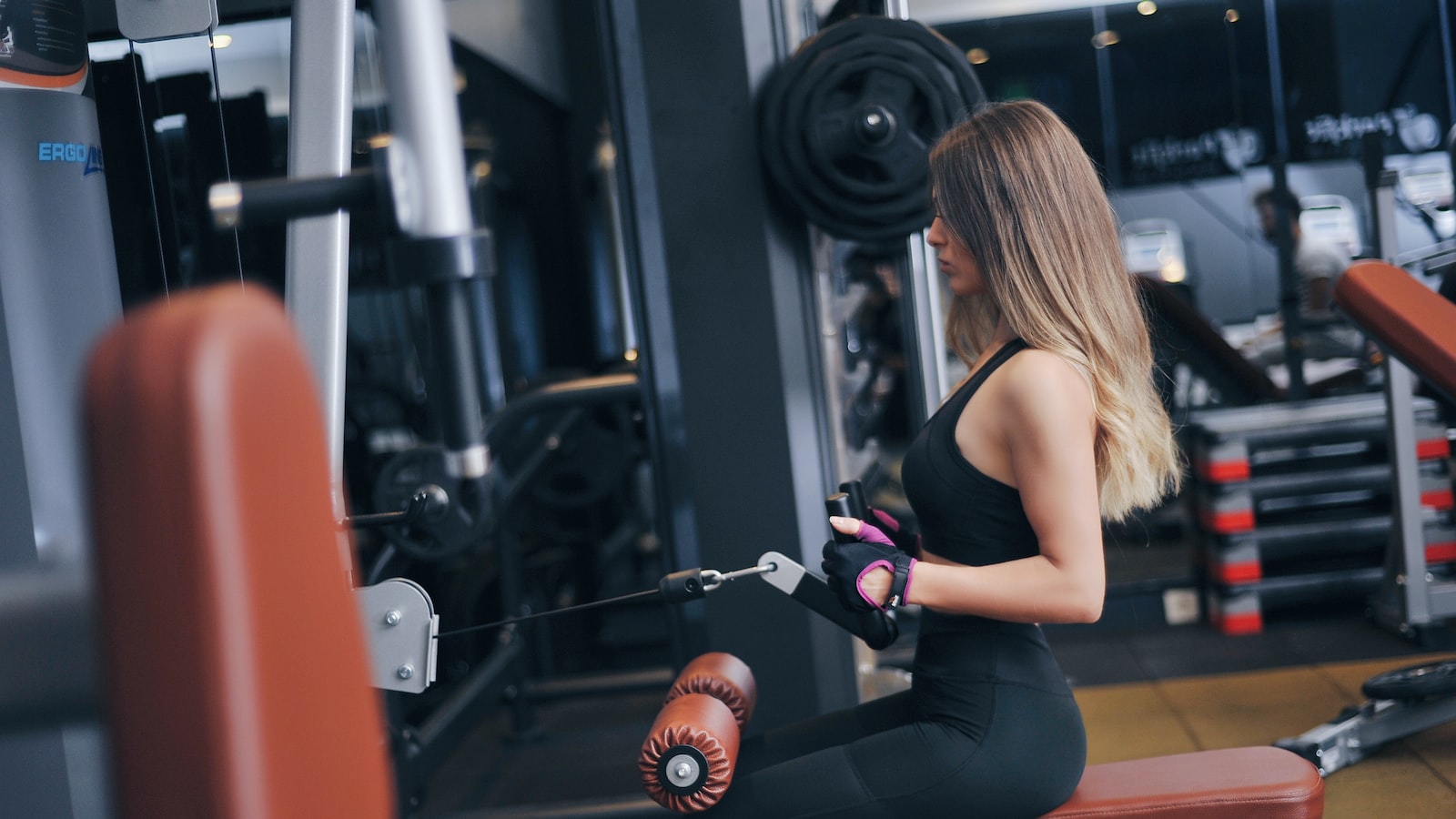
Pilates: Your Go-To Fitness Component?
If you’re looking for a fun way to spice up your fitness routine and get in shape, then look no further than Pilates! In this article, we will discuss why Pilates can be the perfect addition to your lifestyle, why it helps your body and mind, and how to incorporate it into your current fitness regimen. So if you’re ready to learn more about why Pilates is the go-to component for achieving a healthy lifestyle, then let’s get started!
List of Content
- 1. What Is Pilates?
- 2. Why Choose Pilates for Your Fitness?
- 3. Pilates Workouts: What to Expect
- 4. Tips for Getting Started with Pilates
- 5. How to Make Pilates Part of Your Routine
- 6. Benefits of Incorporating Pilates Into Your Fitness Regime
- You Ask, I answer

1. What Is Pilates?
Pilates is an exercise program developed to restore strength, flexibility, and improve posture. It is a safe and effective physical fitness system that focuses on precise movements that engage both the mind and body. The exercises improve balance, coordination, flexibility, core strength, and muscular strength and endurance.
Benefits of Pilates
Pilates is a low-impact exercise and can be modified to the individual needs of the student, meaning anyone can do it, regardless of their age or physical capability. There are so many positive benefits from regular practice of pilates, such as:
- Improved core strength and stability
- Increased joint range of motion
- Corrected posture, alignment and balance
- Relief of muscular tension
- Improved circulation and increased metabolism
How Pilates Can Help you
Pilates is a great tool to help with injury prevention and recovery. Pilates can help improve muscle imbalances, posture and movement patterns. Through the focus on breath and core stability, Pilates helps to create an internal support system to keep the body safe and strong. One of Pilates’ key benefits is its connection between mind and body; helping to focus the mind and increase body awareness.
Types of Pilates
There are a number of different types of Pilates. Two of the most popular forms are Mat-Based Pilates and Reformer Pilates. Mat-based Pilates is a floor-based exercise program that uses bodyweight as resistance. Reformer Pilates utilizes a Pilates Reformer machine for exercises. This machine provides resistance through springs, bands, and pulleys; while allowing for greater range of motion. Reformer Pilates helps to build strength, balance, and flexibility and can be tailored to meet the individual’s needs.

2. Why Choose Pilates for Your Fitness?
Pilates is an exercise regime that can do wonders for your body. With an emphasis on building core strength and alignment, it is a great choice for anyone looking to get fit, strong, and healthy. Here are the top reasons why you should choose Pilates for your fitness journey:
- It Focuses on Core Strength. The exercises you’ll find in Pilates are designed to strengthen and tone your core, as well as improve your posture. Core strength is a key component to overall fitness, so integrating this into your workout regimen is essential.
- It’s Low Impact. A great thing about Pilates is that it’s low impact, making it perfect for those who can’t tolerate high-impact workouts, or those who are just starting out.
- It Improves Flexibility. Pilates focuses on stretching as well as strengthening, so it can increase your range of motion, making your body more flexible.
- It Combines Strength and Cardio. Pilates can be done both as a strength and a cardio workout. You can use heavier weights and do more reps to make it intense enough for a strength training workout, or you can do slower, lighter reps to make it a cardio workout.
Additionally, Pilates can be adapted for anyone, regardless of age or level of fitness. It is a great way to supplement other activities like running, swimming, and yoga, and the focus on alignment can help reduce the risk of injury.
Ultimately, Pilates is an excellent choice for anyone looking to get fit. It combines strength, cardio, flexibility, and alignment to provide a comprehensive workout that tone the entire body. Give it a try and you won’t regret it!
3. Pilates Workouts: What to Expect
Pilates is a great form of exercise for almost everyone. It focuses on strengthening your core, toning your muscles, and improving your posture. But before you begin your Pilates fitness journey, it’s important to understand the fundamentals of the practice. Here’s a look at what to expect when you participate in a Pilates workout.
Types of Pilates Workouts
- Mat Pilates – This is generally the best option for beginners, as this type of workout is done on the floor with only a mat and some resistance bands to help build strength. It focuses on slow and precise movements that are designed to strengthen and tone your muscle groups.
- Reformer Pilates – This form of Pilates is done on a specialized piece of equipment known as a Reformer. This machine allows you to use both your body weight and various straps and bands to build strength. It’s also a great way to increase flexibility.
- Yoga-Pilates Blend – This type of Pilates workout combines traditional Pilates exercises with yoga poses. This is great for those looking to focus on breath work and relaxation alongside their fitness goals.
Develop Mental Focus
Pilates is not just a physical workout. One of the most important aspects of this practice is the mental aspect. Pilates places an emphasis on focusing on your breath and your movements. Slow, controlled breathing and movements create an intention behind the actions that helps develop mental focus. It’s like a moving meditation.
Gentle Exercise for All Levels
Unlike some other forms of exercise that involve jumping, running, and other high-impact movements, Pilates is gentle and suitable for people of all ages and fitness levels. Even if you have an injury or are out of shape, you can benefit from this workout.
4. Tips for Getting Started with Pilates
Take It Slow: Pilates takes practice, and you don’t want to rush. You’ll learn quickly, but pushing yourself too fast can result in discomfort and injury. Start off at a comfortable level and increase the difficulty of poses as you grow stronger.
Ask For Assistance: Whatever level you’re at, it’s always a good idea to have a trained expert guide you through exercises. Even a few tips at the start of your practice can help you get more from it. Additionally, if you ever feel unsure about a pose or how to target specific areas, don’t be afraid to ask for help.
Join a Class: Structured classes can be beneficial – the trainer can provide tips and corrections, the group mentality keeps you accountable, and you can learn the foundational moves from the instructor. Most gyms and studios have classes dedicated to Pilates that accommodate everyone, regardless of ability.
Stay Hydrated and Do Your Research: Make sure you’re drinking plenty of water — and that you’re well-rested — before you get on the mat. Once you’ve started your practice, research ways to customize it to your own goals, body type, and lifestyle. Get to know which poses will provide maximum benefit for your efforts.
5. How to Make Pilates Part of Your Routine
Keep Track of Your Workouts
A great way to make sure pilates is part of your regular routine is to set up a tracking system. This can be anything from a checklist, a calendar, or an app for your phone. Planning time slots into your day for when you can exercise, and noting when you’ve completed the session will go a long way towards keeping it up in the long run.
Education is Power
Knowledge is key, so make sure to read up as much as you can on pilates before your first class. You don’t need to know every movement, but having info on the basics and the philosophy behind the exercise will help you make the most of your classes. Pilates is extremely accessible and there’s lots of guidance available.
Mix It Up
You should feel you have plenty of options open when it comes to pilates practice. Different exercises can be used to target different areas of the body, and you don’t always have to stick to the traditional pilates mat workout. Start your routine by taking regular pilates classes, but branch out to other formats like reformer pilates, small equipment classes, pre- and post-natal classes, etc.
Work Out At Home
- Think about dedicating a corner of your home to exercise to make it easier to practice on the spot.
- YouTube contains a plethora of pilates clips, for both low-impact and higher impact routines.
- Borrow or buy a few pilates bikes, bands, or weights to make your workouts even more interesting.
Replace going to the gym with at-home pilates classes and you won’t have to worry about squeezing in time between chores and getting to and from the gym.
6. Benefits of Incorporating Pilates Into Your Fitness Regime
1. Improved Flexibility and Joint Mobility
Pilates strengthens the muscles around the joints and improves the mobility of the spine, hips, shoulders, and wrists. It helps the body attain a balance of strength and flexibility. Pilates lengthens and stretches the muscles, leading to increased joint flexibility and range of motion.
2. Deeper Mind-Body Connection
Pilates relies heavily on movement that originates from the core and is deeply connected to the mind. It forces you to become focused on conscious breathing and engage your core deeply. Pilates provides a deeper sense of awareness that engages your body and mind, forming a greater mind-body connection.
3. Improved Core Strength
Pilates focuses on building a strong core and priority is placed on consistent breathing, proper posture, and focused core activation. As you progress, you will start to build strength which in turn will enhance the quality of your movements. Your body will become more toned, while achieving a flat stomach and toned arms by strengthening the relevant muscles.
4. Eased Stress Levels
Pilates is a great way of enjoying physical activity that also helps to relax and reduce mental stress. With focused breathing and calming movements, your stress levels can be eased. It can aid in the release of muscle tension, leading to a better mood. Pilates is also a safe form of exercise with low risk of injury so you can complete your sessions with satisfaction.
You Ask, I answer
Q1: What is Pilates?
A1: Pilates is a system of exercise that incorporates mindfulness, breathwork, and body awareness to create an efficient and effective workout for the mind and body. It can be modified for any fitness level and body type, making it a great option for all workout enthusiasts.
Q2: What are the benefits of Pilates?
A2: Pilates can help improve muscle definition, flexibility, posture, balance, and strength. Additionally, the mindfulness and breathwork components can help reduce stress levels and improve focus and concentration.
Q3: What kind of exercise does Pilates incorporate?
A3: Pilates traditionally consists of low-impact movements that involve special equipment such as the Pilates Reformer or the Pilates Mat. There are also Pilates classes that may incorporate other forms of exercise such as strength training and cardio to offer a full-body workout.
Q4: How often should I practice Pilates?
A4: It’s recommended that you practice Pilates at least 2-3 times a week to see the best results. However, the frequency and duration of your sessions depend on your fitness goals and experience level. It’s always best to consult with your doctor before starting any exercise program.
If you’re looking to shake up your fitness routine and add some variety to the mix, Pilates might just be the perfect component to help you reach your goals. With its varied movements and low intensity, Pilates is a great way to stay active, healthy and have some fun. So give Pilates a try and see for yourself!

